
© Peter Greig. (Click image for larger version)
On 26 February 2016 Ekman’s Cacti is being both premiered by Royal New Zealand Ballet in Wellington, and revived by Sydney Dance Company (in Sydney) where it opens their 2016 season.
In March Cacti can also be seen in Toronto, danced by the National Ballet of Canada and in April/May Nederlands Dans Theater 2 tour the UK with Ekman’s famous piece.
alexekman.com
rnzb.org.nz, sydneydancecompany.com, national.ballet.ca, www.ndt.nl

© Peter Greig. (Click image for larger version)
Since then, Cacti has travelled around the world from Dresden to Dortmund, Atlanta, Boston, São Paulo, Copenhagen and, on an NDT tour, to London. Late last month Ekman was in Sydney to restage it for the Sydney Dance Company and then in Wellington where the Royal New Zealand Ballet will perform Cacti for the first time on 26 February. Next month there will be another Cacti premiere when it enters the repertoire of the National Ballet of Canada.

© Peter Greig. (Click image for larger version)
Cacti is a rarity in the contemporary dance world. Its timing, military precision and the deliberate pomposity of the text, purporting to be the words of a self-important critic, combine to make the audience laugh out loud from the opening scene in which the dancers beat out a frenzied rhythm, each kneeling on their own white square. (Ekman says he was inspired by the sight of Tibetan monks engaging in what looked like a noisy yoga ritual). Later, when the cacti make their appearance, the dancers hold the spiny succulents as if they were ancient artefacts.
The audience might laugh until they cry but there’s more than fun and clever choreography behind Cacti. Ekman said the work was his way of getting his own back with supercilious critics who dissected and dismissed some of his early pieces. Cacti and its revealing costumes are a metaphor for the vulnerability of the artists on the stage and the choreographer as well. When Ekman choreographed Cacti, “I was dealing with that stuff of being reviewed in public” and of course that put him under the magnifying glass, “like being naked on stage. It’s very painful and difficult sometimes if someone doesn’t like you.
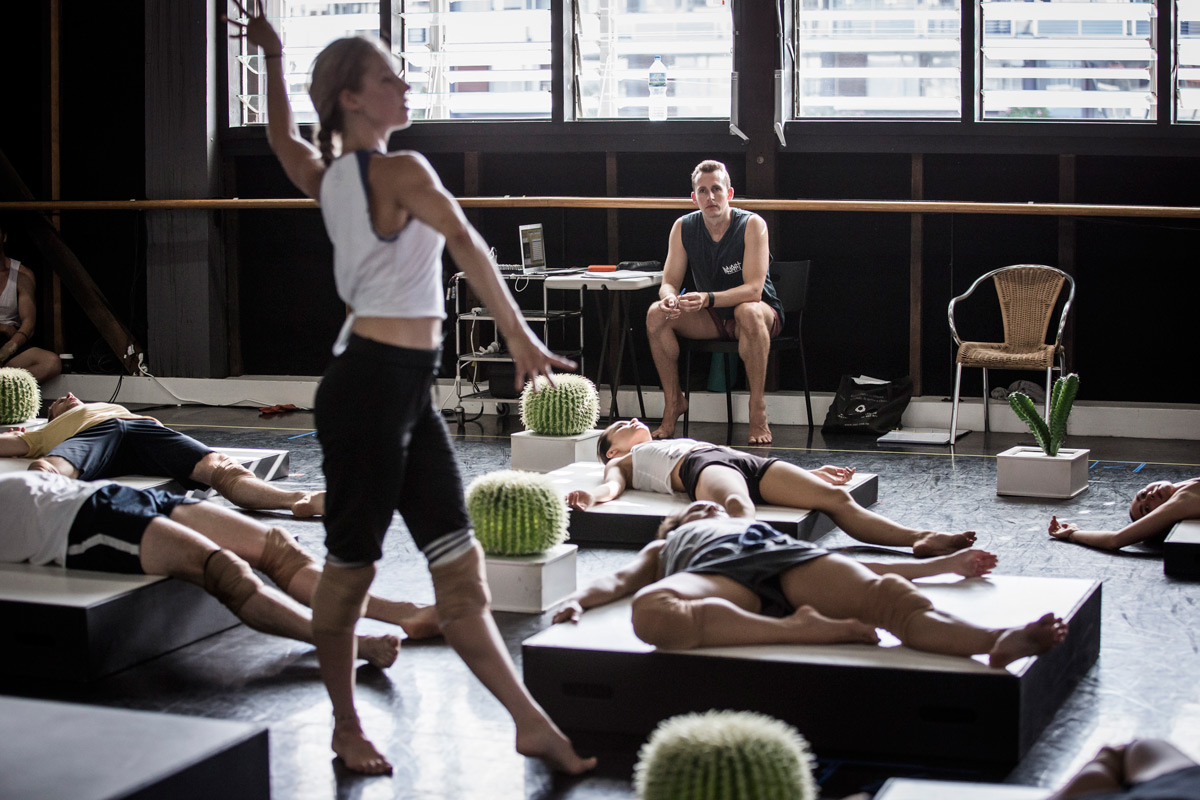
© Peter Greig. (Click image for larger version)
“These critics write, in a way, for their own career. They want to write an entertaining article. Sometimes a really mean article can be fun to read but …why don’t they just create their own art? It’s so easy to have an opinion. All these artists have spent years on this thing and then they [the critics] go and write something in an evening”. This was, he said, “a system that’s worth questioning”.
When Ekman described the hurt he felt in the past, there is no sign of bitterness or sadness now. As we chatted in a studio at the Sydney Dance Company Ekman, was as funny and relaxed as anyone can be when they have recently survived the long-haul flight from Stockholm to Sydney and when time is of the essence before another much shorter flight to New Zealand.

© Peter Greig. (Click image for larger version)
His travelling days may be coming to an end as Ekman plans to start his own dance company in Sweden. “I’m about to go into a whole new way of creating because I’ve been doing this thing of jumping between existing companies. It’s been my way of working until now. I’ve learned a lot through that, seeing different groups and different directors and different ways of creating so now I’m super-excited and eager to create. It’s time.
“I will spend a lot of time on how we create together. I have to deal with maybe 50 other people to reach my vision. I’m extremely jealous of writers and composers. They can just work alone. It’s a pain in the ass sometimes to work with 50 people who all have their own shit”. But that, he said, is the job, “to see the group every day and then to create in the moment, coming into the studio, trying your ideas on other people and if they don’t work everyone feels that and you still have to keep it up and keep going”.

© Peter Greig. (Click image for larger version)
Ekman is accustomed to the logistics and creative challenges of working within a large dance institution. From the age of 10, when he started training at the Opera Ballet School in Stockholm, he was immersed in the culture of the Royal Swedish Ballet. As a child he danced with the company, and watched from the wings as the company performed. At 17 he joined the Royal Swedish Ballet but after all those years of training and a year or so with the company, Ekman grew tired of the technical constraints of ballet and joined Nederlands Dans Theater 2 where he danced in the works of Jiri Kylian, Hans van Manen, Mats Ek and Nacho Duato until 2005. He then spent one year at the Swedish Cullberg Ballet before launching his career as a choreographer. But ballet was still in his blood. After choreographing more than 30 contemporary works he was commissioned by the Royal Swedish Ballet to create a ballet. The result, in 2012, was Tyll (Swedish for tulle), which he describes as a ballet about ballet. “It really respects ballet. It’s important to say I’m not making fun of ballet at all”. Tyll is now in the rep of the Joffrey Ballet and, Ekman said, “I think Houston Ballet will do it too”.
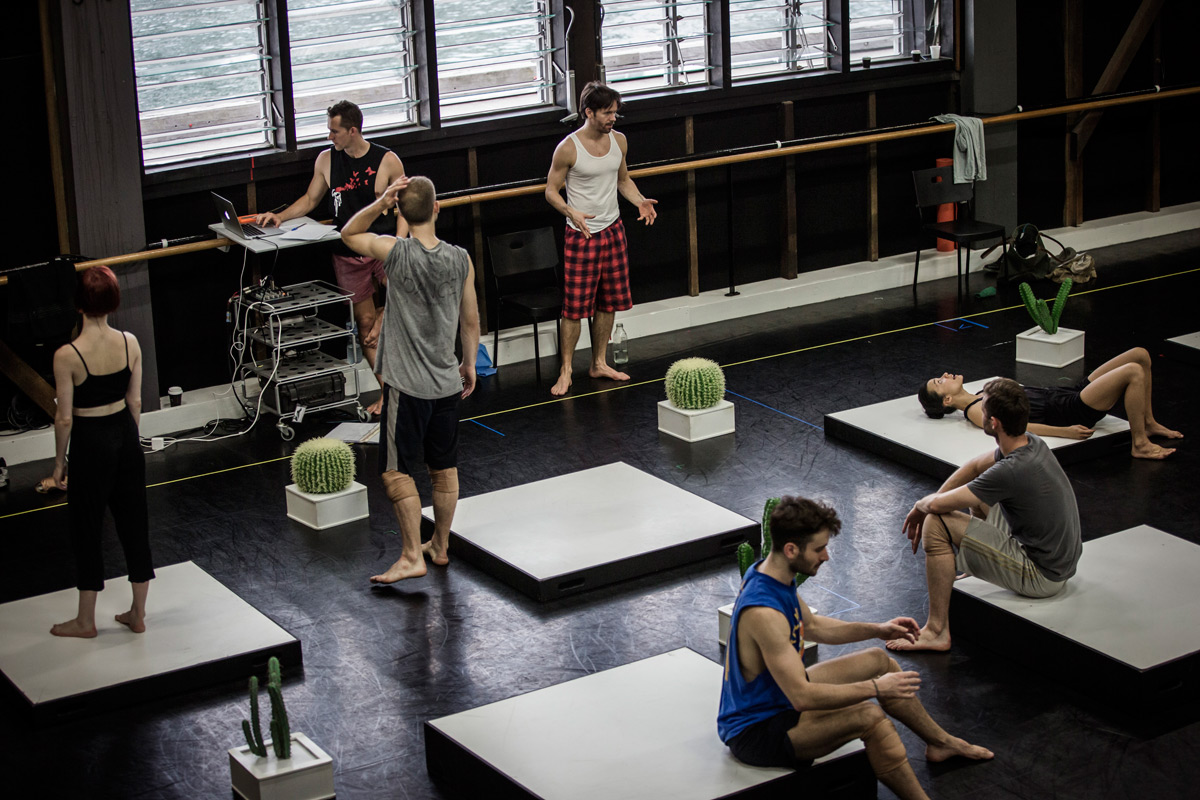
© Peter Greig. (Click image for larger version)
Tyll and Cacti stand out as Ekman’s own favourite creations, almost as if “they had their own power, their own life. They woke up or became alive in some weird way”. Cacti was Ekman’s first orchestra piece, played by a string quartet on the stage. The core of the composition is the very fast fourth movement of Schubert’s String Quartet in D minor, known as Death and the Maiden, but it also includes the music of Haydn, Beethoven and Mahler. As well, the score is interspersed with spoken text. The words seem to be coming from a critic who is talking to himself as he plans a string of phrases for his review: “What do we see?” “What will be remembered? “The trained eye can see”. Cacti are the “host of the subtext…too subtle to detect” and “is this the end? Yes I think this is the end, it must be the end, yes it’s the end”. The text, said Ekman “is just a lot of artsy-fartsy blah blah blah. That was the whole point. It’s making fun of that character who thinks he’s just a little bit better than anyone else”.
Did he set out to make a funny piece? “No, I never go into the studio trying to make a funny work”. The audience laugh, he said, just as people sometimes laugh at an uncomfortable situation, or when they relate to a moment in their lives that they see on stage. When he is remounting a piece, as he was for the Sydney Dance Company, Ekman works on “pushing energy” into the dancers, making sure they know where the movement comes from and who they are when they perform. He will ask “who are you when you’re dancing Cacti? Because I’m not interested in seeing you, I want to see someone else”.

© Peter Greig. (Click image for larger version)
So how does he help them become another person? “Well that’s the whole talent of choreographing, that’s the challenge. There are always certain words or situations that I suggest and then their job is to imagine that situation and then it usually happens”. As an example, Ekman asks the dancers to see Cacti “as if they’ve been working on it for 20 years, and that’s how important it is for them to perform Cacti”. When they take a certain position at the beginning of the work the dancers must make sure “the angle of their arm is exactly the right way because if they think like that, it becomes important to them and then we, as an audience can feel that. There’s nothing more boring than mediocrity. We don’t need that”. His goal is always to make the dancers “invested and present in the moment”.
The SDC dancer, Todd Sutherland, who has performed Cacti over two seasons, said that each time “he asked us to question not just the steps but the drama behind them. We are not merely dancers but characters who tell stories. Alexander is as much a dramaturg as he is a choreographer”.

© Peter Greig. (Click image for larger version)
Both Francesco Ventriglia, artistic director of the Royal New Zealand Ballet, and Rafael Bonachela, artistic director of SDC, must know they have a sure-fire crowd pleaser in Cacti. Before he came to Australia, Bonachela shared a program with Ekman in Barcelona. “We each had a work performed by IT Dansa. So this was a great chance to see first hand his style and interest, and to get a taste for his spirit and personality. When I came to Australia we were in touch and kept each other updated on our latest productions. Very early on I felt his work would be great for Sydney Dance Company”. When Cacti premiered in March 2013 it was the first time that Ekman’s work had been performed in Australia and “from the very first showing it was an absolute hit. Sydney audiences and critics alike just loved it”.
When Ventriglia became the artistic director of the RNZB at the end of 2014 “one of the first phone calls I made from Wellington was to Alexander Ekman to ask him about the RNZB performing Cacti. He immediately answered yes, cool. He is a genius, one of the new great signatures in the dance world. What I love about Cacti is the way the music, light, choreography and architecture of the space work together – it’s very clever. It’s an honour to have Alexander in NZ for the first time”.
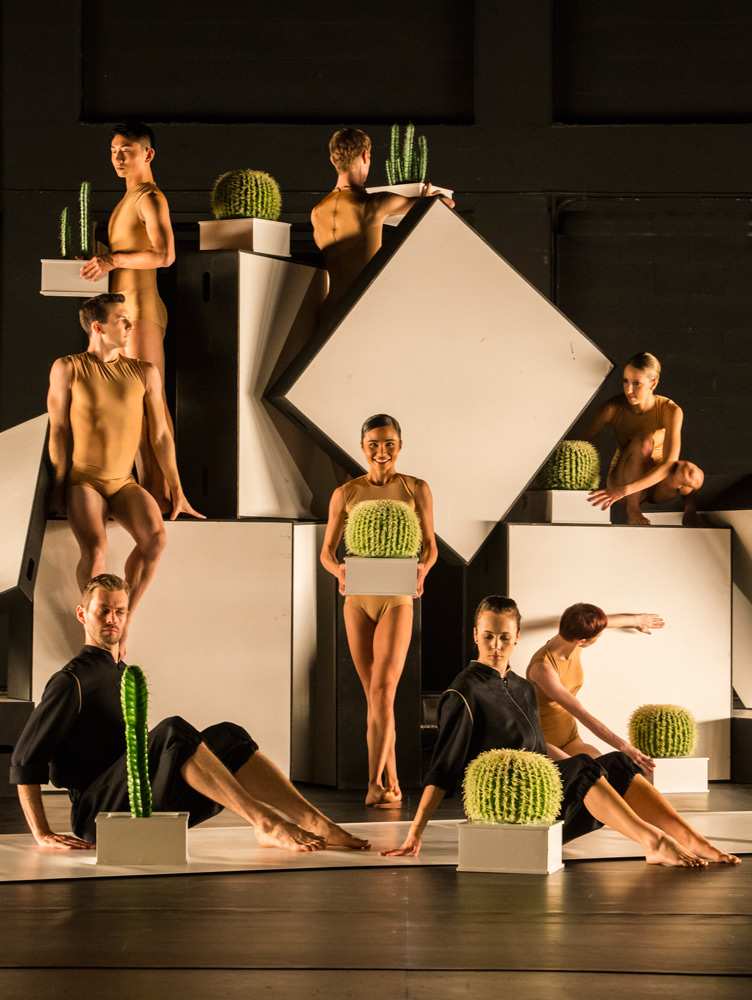
© Peter Greig. (Click image for larger version)
After Cacti in Sydney and Wellington Ekman will continue working on his big new piece, Cow, premiering next month in Dresden Semperoper. There may or may not be an actual cow on stage. A cow would cost a lot more in cleaning fees than any collection of cacti but with Ekman, no one can be sure what the next surprise will be. In 2014 Ekman choreographed his own Swan Lake, or as he called it A Swan Lake, complete with a real lake on stage, filled with 6000 litres of water. “It was fun. Dancing in water – it’s just great”. I wondered what would happen if the water washed over the orchestra? Easy. “We choreographed all the splashes backwards”.









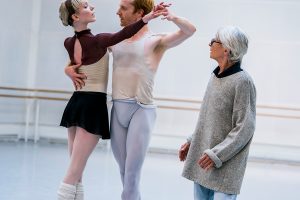

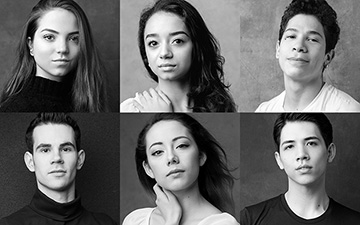





You must be logged in to post a comment.